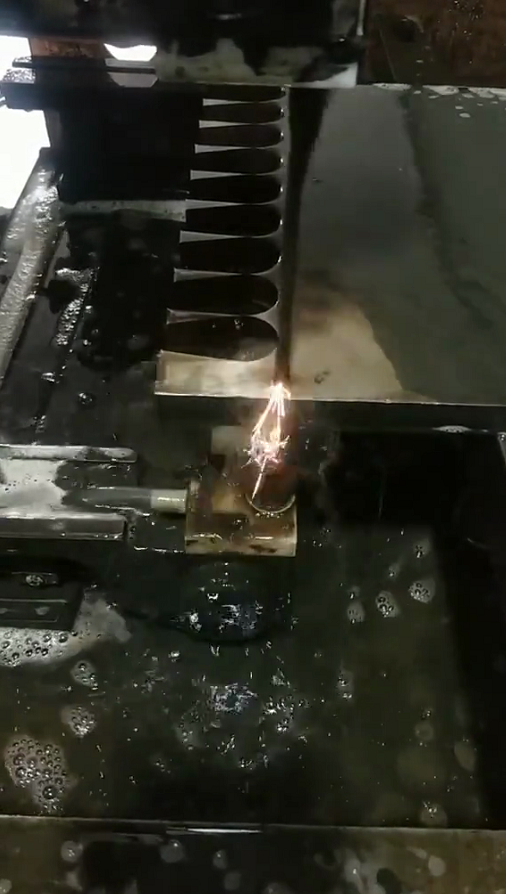What are the pollutants produced in machining
Definition of pollutants
Pollutants in hydraulic system refer to all substances and energy existing in hydraulic medium that are harmful to the system. It includes solid particles, water, air, chemicals, microorganisms, static electricity, heat energy, magnetic field and radiation.
The main pollutants in the industrial hydraulic and lubrication system are:
Harmful particles, water, air.
Source of pollutants
Inherent pollutants
Internally generated pollutants
External invading pollutants
Re contamination during maintenance
How are pollutants produced?
The hydraulic components and assemblies are deburred or not strictly cleaned before assembly, and the casting sand, chips, dust and other sundries are brought into the parts during assembly;
When installing the pipe, the water rust, welding slag, oxide scale and other sundries inside the pipe and joint are not cleaned;
Oil oxidation causes changes in properties and produces precipitates and colloids;
There is a certain amount of water in the oil, which will corrode the metal and form water rust in the working process;
During the working process, the moving parts of hydraulic components rub against each other to form metal abrasives;
The primer on the inner wall of the oil tank is aging, resulting in falling paint flakes;
Dust and water vapor from the breathing port of the oil tank;
Do not pay attention to oil filtration when changing or replenishing oil, or use dirty oil drums without strict cleaning, and inject sundries into the oil tank when filling oil;
The piston rod surface of the hydraulic cylinder is not provided with a dust ring, and dust and other dirt in the atmosphere are inhaled at the sealing part;
Do not pay attention to bring fibers or screws into the pipeline during maintenance.
Generation and harm of pollutants
Hazards of solid particles: pollution and wear of components, pollution and clamping of components, pollution and blockage of components, deterioration of oil
Water: corrosion, accelerated oil deterioration, low temperature icing
Air: cavitation, reducing elastic modulus and accelerating oil deterioration
Chemicals: corrosion, washing
Heat energy: change oil performance, oil deterioration and accelerate component aging
Magnetic field: adsorbed particles
Radioactive substances: accelerate oil deterioration
Pollutants in hydraulic system refer to all substances and energy existing in hydraulic medium that are harmful to the system. It includes solid particles, water, air, chemicals, microorganisms, static electricity, heat energy, magnetic field and radiation.
The main pollutants in the industrial hydraulic and lubrication system are:
Harmful particles, water, air.
Source of pollutants
Inherent pollutants
Internally generated pollutants
External invading pollutants
Re contamination during maintenance
How are pollutants produced?
The hydraulic components and assemblies are deburred or not strictly cleaned before assembly, and the casting sand, chips, dust and other sundries are brought into the parts during assembly;
When installing the pipe, the water rust, welding slag, oxide scale and other sundries inside the pipe and joint are not cleaned;
Oil oxidation causes changes in properties and produces precipitates and colloids;
There is a certain amount of water in the oil, which will corrode the metal and form water rust in the working process;
During the working process, the moving parts of hydraulic components rub against each other to form metal abrasives;
The primer on the inner wall of the oil tank is aging, resulting in falling paint flakes;
Dust and water vapor from the breathing port of the oil tank;
Do not pay attention to oil filtration when changing or replenishing oil, or use dirty oil drums without strict cleaning, and inject sundries into the oil tank when filling oil;
The piston rod surface of the hydraulic cylinder is not provided with a dust ring, and dust and other dirt in the atmosphere are inhaled at the sealing part;
Do not pay attention to bring fibers or screws into the pipeline during maintenance.
Generation and harm of pollutants
Hazards of solid particles: pollution and wear of components, pollution and clamping of components, pollution and blockage of components, deterioration of oil
Water: corrosion, accelerated oil deterioration, low temperature icing
Air: cavitation, reducing elastic modulus and accelerating oil deterioration
Chemicals: corrosion, washing
Heat energy: change oil performance, oil deterioration and accelerate component aging
Magnetic field: adsorbed particles
Radioactive substances: accelerate oil deterioration
